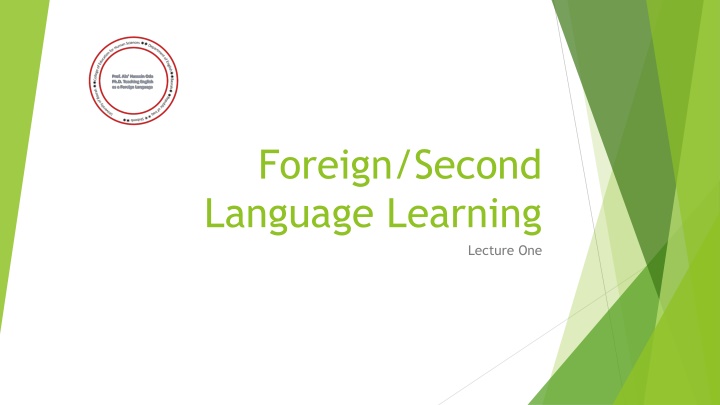
Effective Strategies for Foreign Language Acquisition and Learning
Explore the distinctions between language acquisition and learning, highlighting the importance of natural communication and conscious knowledge accumulation. Understand the impact of activities on language acquisition and barriers faced in second language learning. Gain insights into how individuals overcome challenges in developing proficiency in a second language.
Download Presentation

Please find below an Image/Link to download the presentation.
The content on the website is provided AS IS for your information and personal use only. It may not be sold, licensed, or shared on other websites without obtaining consent from the author. If you encounter any issues during the download, it is possible that the publisher has removed the file from their server.
You are allowed to download the files provided on this website for personal or commercial use, subject to the condition that they are used lawfully. All files are the property of their respective owners.
The content on the website is provided AS IS for your information and personal use only. It may not be sold, licensed, or shared on other websites without obtaining consent from the author.
E N D
Presentation Transcript
Foreign/Second Language Learning Lecture One
Acquisition and Learning A more significant distinction is made between acquisition and learning. The term acquisition is used to refer to the gradual development of ability in a language by using it naturally in communicative situations with others who know the language. The term learning, however, applies to a more conscious process of accumulating knowledge of the features, such as vocabulary and grammar, of a language, typically in an institutional setting. (Mathematics, for example, is learned, not acquired.)
Activities associated with learning have traditionally been used in language teaching in schools and have a tendency, when successful, to result in more knowledge about the language (as demonstrated in tests) than fluency in actually using the language (as demonstrated in social interaction). Activities associated with acquisition are those experienced by the young child and, by analogy, those who pick up a second language from long periods spent in interaction, constantly using the language, with native speakers of the language
Acquisition Barriers For most people, the experience with an L2 is fundamentally different from their L1 experience and it is hardly conducive to acquisition. They usually encounter the L2 during their teenage or adult years, in a few hours each week of school time (rather than via the constant interaction experienced as a child), with a lot of other things going on (young children have little else to do), and with an already known language available for most of their daily communicative requirements.
Despite the fact that insufficient time, focus and incentive undermine many L2 learning attempts, there are some individuals who seem to be able to overcome the difficulties and develop an ability to use the L2 quite effectively, though not usually sounding like a native speaker (i.e. someone for whom it is an L1).
Foreign Language Vs. Second Language English in India English in Iraq
Applied Linguistics Approach Method Technique
